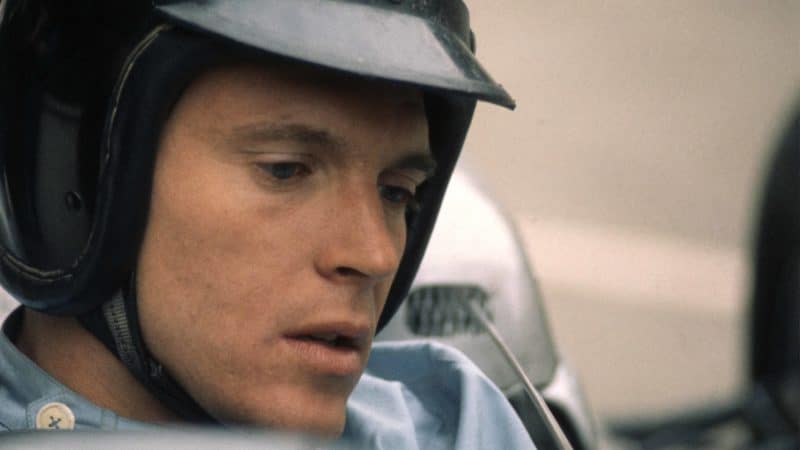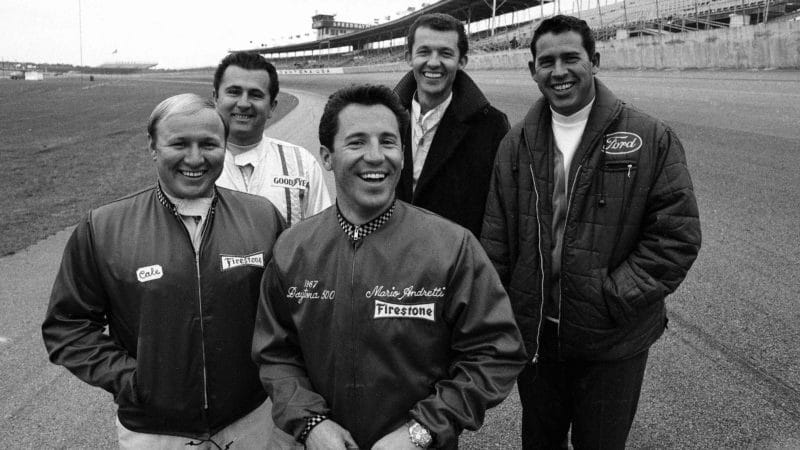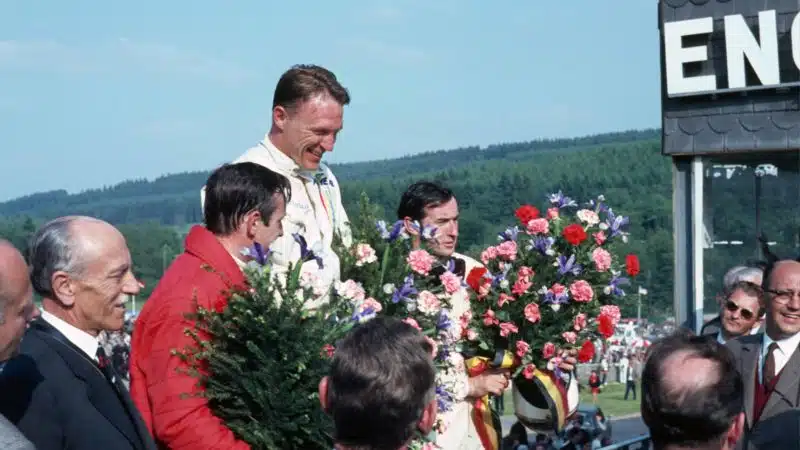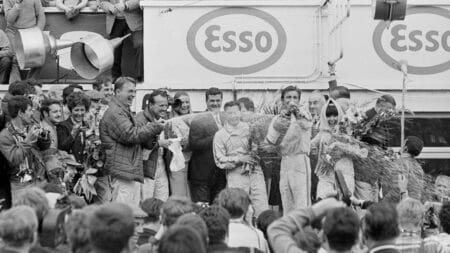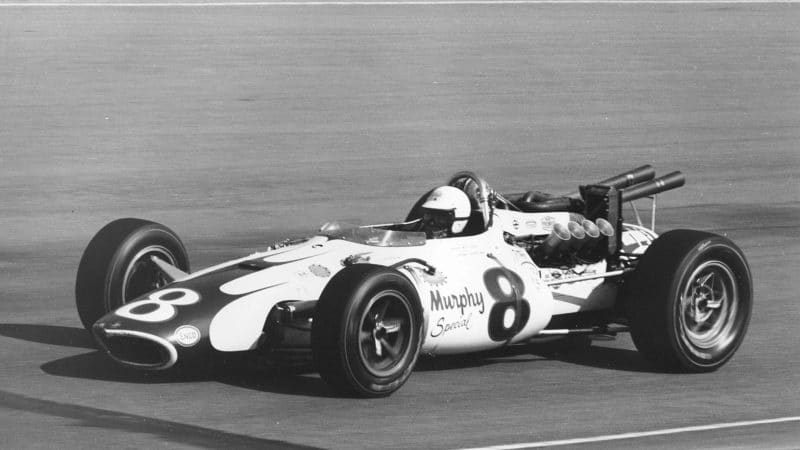Those successive spring weekends in June, 1967 define Gurney’s driving career. He was as versatile as they come racing F1, long-distance sports cars, Can-Am cars, Indycars, NASCAR stock cars, Trans-Am cars and almost anything in between. About the only thing Gurney didn’t do as a driver was dirt track racing in midget or sprint cars and that was largely because he’s so tall he couldn’t fit in those cars.
Dan always preferred to do his own thing and his record as a driver is probably less impressive than it might have been had he chosen not to pursue his dream of building and racing his own Eagle racing cars out of his All American Racers shop in Southern California. The effort that went into running the team and finding the necessary funding resulted in Dan dropping out of F1 before he would have had he remained a mere driver. During the three years (1966-’68) he spent building, developing and racing his own F1 cars he probably could have won plenty of races and championships with Jack Brabham, who wanted Gurney to continue with his team after the 1965 season. Bar the odd race, that was not Dan’s way.
Gurney raced F1 cars for 12 years from 1959-70. He started with Ferrari in 1959, moved to BRM in 1960, to Porsche in 1961 and ‘62, Brabham for 1963-65, then raced his own cars from 1966-68. He came back to drive a few races for McLaren in 1968 and ‘70, but retired from driving near the end of 1970. Dan won four world championship Grands Prix during this time and three more non-championship F1 races of which there were many in those days. He finished third in the 1961 world championship, tied with Stirling Moss, and was fifth in the championship in 1962 and ‘63, sixth in ‘64, and fourth in ‘65.
With due respect to Mario, it can strongly be argued that Dan was the fastest American Grand Prix driver we’ve ever seen. He started from the front row 22 times in 86 world championship starts and recorded fastest laps and track records at true driver’s tracks like Spa and the Nürburgring. Famously, he was on pole at Spa in 1964 with a Brabham, set a new track record in the race and would have won had he not run out of fuel on the second-last lap. In the German GP at the ‘Ring in 1967 he set a new track record and was leading the race by almost a minute when a driveshaft broke.
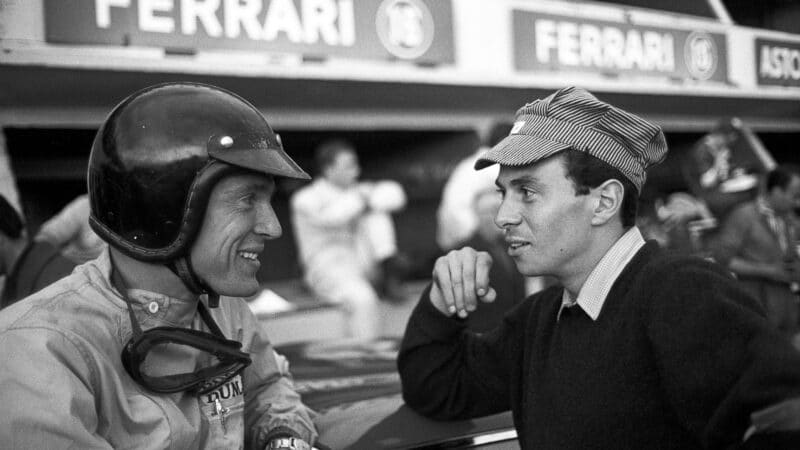
Chatting with Clark at Le Mans in ’62
Bernard Cahier/Getty Images
During this time Jim Clark became a great friend and rival. Clark and Gurney had tremendous respect for each other and were Lotus team-mates at Indianapolis in 1963 and ‘64. Dan was a moving force in bringing Lotus founder Colin Chapman and the Ford Motor Company together to introduce the rear-engine revolution to Indianapolis and Indycar racing as documented in Motor Sport.
Dan made his name driving a 4.9-litre Ferrari sports car for Frank Arciero in California in 1957 and ‘58 and through Luigi Chinetti he was invited to test a factory Ferrari sports car in Italy at the end of 1958. Gurney was hired by Ferrari to drive sports cars in 1959 and after showing his speed and skill he was promoted in the middle of the year to the F1 team. It took Dan only 30 races to make it to F1 from his first race in the autumn of 1956 aboard a Triumph TR2.
As a long-distance sports car driver Gurney was as good as they come. He won the Sebring 12 hours with Ferrari in 1959 and the Tourist Trophy six-hour race at Goodwood too. At Goodwood he co-drove with Tony Brooks who was Ferrari’s F1 team leader that year. Many people believe Brooks was the equal of Stirling Moss and Brooks has great praise for Gurney.
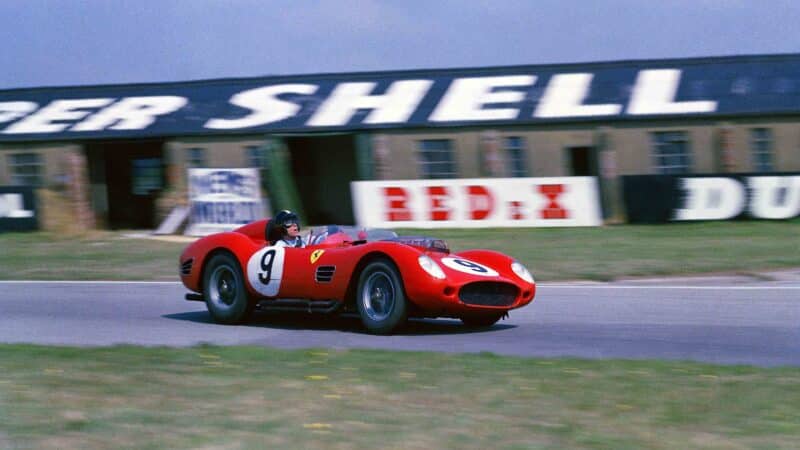
Gurney in the Ferrari 250 Testarossa he shared with Tony Brooks at Goodwood in 1959
Klemantaski Collection/Getty Images
“Dan was an extremely good driver and I was delighted to be paired with him,” Brooks says. “The only problem was he’s a great, big chap and his legs are so much longer than mine, so I didn’t really fit the seat very well. But Dan and I got along extremely well. We hit a very happy note and it was clear that Dan was going to be an extremely good driver, which of course, he subsequently proved.”
After leaving Ferrari for BRM in 1960, Dan drove some sports car races aboard a Maserati T60 for Lucky Casner’s Camoradi team. At the Nürburgring 1000Kms Dan was teamed with Stirling Moss and the pair came back from a pitstop to replace a blown oil line to catch and pass Ferrari’s team of three cars in pouring rain. It was one of the most classic comeback victories ever seen at the ‘Ring and Moss echoes Brooks’ comments about Dan as a co-driver.
